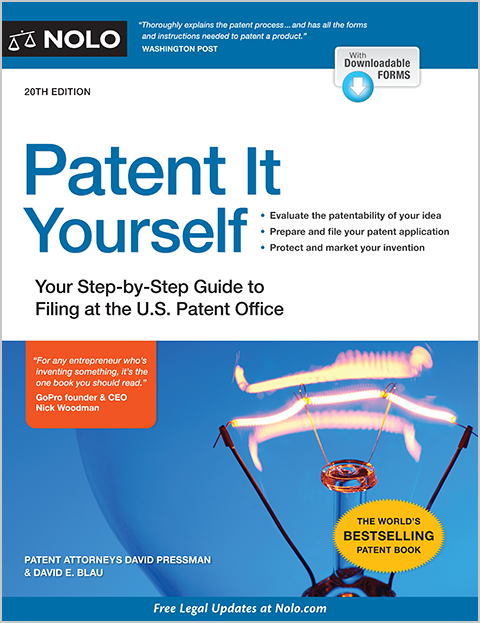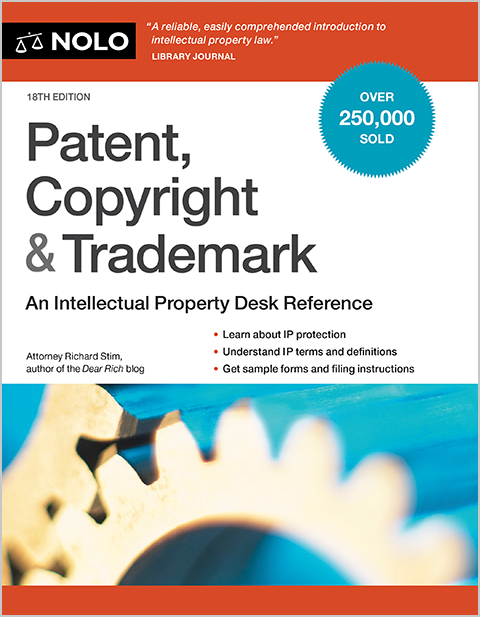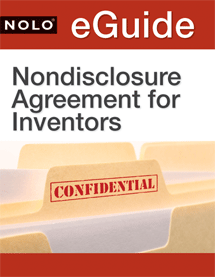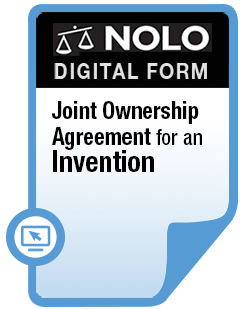Choose Class 21 if you're registering a trademark for glassware, cookware, dishes, and cleaning utensils.
Class 21 includes mainly small, hand-operated utensils and apparatus for household and kitchen use, as well as toilet utensils, glassware, and articles in porcelain.
Specifically, the class includes sponges, brooms, dishes, pots, drinking glasses, and toothbrushes.
What Goods Are Included Under Trademark Class 21?
The following is a more comprehensive list of Class 21 goods:
- Statues, figurines, plaques, and works of art, made of materials such as porcelain, terracotta, and glass, busts of porcelain, ceramic, earthenware and glass, china ornaments, piggy banks, and signboards of porcelain.
- Unworked and semi-worked glass, enameled glass, fiberglass thread not for textile use, fused silica as a semifinished product, unfinished glass for vehicle windows, glass wool not for insulation, glass incorporating fine electrical conductors, mosaics of glass, opal glass, opaline glass, polished plate glass, powdered glass for decoration, and vitreous silica fibers other than for textile use.
- Garden planters, hose sprayer nozzles, flower pots, flower pot covers not of paper, flower pot saucers, gardening gloves, holders for flowers and plants, indoor terrariums, nozzles for sprinkler hose, nozzles for watering cans, hose nozzles, roses for watering cans, lawn sprinklers, syringes for watering flowers and plants, sprinklers for watering flowers and plants, vases, watering cans, and window boxes.
- Cleaning brushes, brooms, material for brushmaking, scrubbing brushes, brushes for footwear, brushes for cleaning tanks and containers, dishwashing brushes, horsehair for brushes, lamp glass brushes, nail brushes, pig bristles for brushmaking, tar brushes, and toilet brushes.
- Tableware, nonelectric cookware, containers for household or kitchen use, nonelectric autoclaves for cooking, baking mats, basting spoons, nonelectric egg beaters, heat insulated containers for beverages, nonelectric food blenders, bottles sold empty, boxes of glass, bread boards, bread bins, bread baskets for domestic use, butter dishes, butter-dish covers, serving trays, cake molds, nonelectric candelabra, candlesticks, candle rings, candle extinguishers, candy boxes, boxes for sweets, cauldrons, cheese-dish covers, pot lids, pot lid holders, coasters, hand-operated coffee grinders, nonelectric coffee percolators, coffee filters not of paper, coffee services, nonelectric coffeepots, nonelectric portable coolers, decorating bags for confectioners, cookery molds, cookie jars, cookie cutters, nonelectric cooking pot sets, paper cooking pots, cooking skewers, cruet sets for oil and vinegar, oil cruets, cups, cutting boards, nonelectric deep fryers, carboys, dish covers, dishes, table plates, crockery, egg cups, epergnes, fruit cups, nonelectric fruit presses, fruit bowls frying pans, funnels, garlic presses, glass flasks, glass jars, glass stoppers, bowls, beverage glassware, graters for household purposes, grills, nonelectric griddles, heat-insulated containers, nonelectric heaters for feeding bottles, hot pots not electrically heated, ice cube molds, insulating flasks, vacuum bottles, nonelectric whistling kettles, knife rests, lunch boxes, menu card holders, hand-operated salt and pepper mills, non-electric food mixer, non-electric meat grinders, mixing spoons, molds, mugs, napkin rings, napkin holders, hand-operated noodle machines, paper plates, pastry cutters, pepper pots, fitted picnic baskets, tart scoops, plates, pots, rolling pins, salad bowls, salt cellars, salt shakers, saucepans, saucers, ice cream scoops, coffee services, sieves for household purposes, hand-operated flour sifters, soup bowls, spatulas, spouts, stewpans, strainers, sugar bowls, table plates, cooking forks, serving spoons, tea strainers, tea cosies, tea services, tea infusers, tea balls, tea caddies, teapots, thermally insulated containers for food and beverages, toothpick holders, trays for domestic purposes of paper, meal trays, trivets, urns being vases, nonelectric vessels for making ices and ice cream, nonelectric waffle irons, and nonelectric whisks.
- Glass beverageware, drinking vessels, barware, beer mugs, shot glasses, bottle openers, cocktail stirrers, corkscrews, decanters, drinking glasses, drinking vessels, drinking flasks, bottle gourds, flasks, drinking horns, ice buckets, ice pails, jugs, pitchers, cocktail shakers, wine-tasting pipettes, siphon bottles, drinking straws, and tankards.
- Cleaning articles, abrasive pads for kitchen purposes, basins in the nature of receptacles, buckets, pails, carpet beaters, nonelectric carpet sweepers, chamois leather for cleaning, cinder sifters for household use, cleaning cloths and rags, cloth for washing floors, cotton cloths, crumb trays, dusting cloths, feather dusters, furniture dusters, gloves for household purposes, litter boxes and trays for pets, mop wringers, mops, toilet plungers, polishing leather, floor polish applicator, polishing gloves, saucepan scourers, pads for cleaning, cleaning sponges, steel wool for cleaning, washing boards, and washtubs.
- Perfume burners, vaporizers for perfume, perfume sprayers, and plug-in diffusers for air fragrances.
- Dustbins, garbage cans, refuse bins, trash cans, and wastepaper baskets.
- Sponges, brushes, soap containers, abrasive sponges for scrubbing the skin, foldable bathtubs for babies, boxes for dispensing paper towels, chamber pots, comb cases, combs, large-toothed combs for the hair, electric hot combs, eyebrow brushes, makeup removing appliances, powder puffs, powder compacts, shaving brushes, shaving brush stands, soap holders, dishes for soap, soap boxes, soap dispensers, sponge holders, fitted vanity cases, toilet paper dispensers, toilet paper holders, and towel rails and rings.
- Toothbrushes, dental floss, toothpicks, and water apparatus for cleaning teeth and gums.
- Cages for pets, pet brushes, pet feeding dishes, bird baths, birdcages, bird feeders, cages for household pets, combs for animals, currycombs, drinking troughs, feeding troughs, horse brushes, mangers, artificial nest eggs, poultry rings, rings for identifying birds, indoor aquaria, indoor insect vivaria, aquariums, aquarium hoods, and fish tanks.
- Fly swatters, mouse traps, electric devices for attracting and killing insects, ultrasonic pet repellers, flycatchers, insect traps, and rat traps.
- Clothes drying racks, ironing boards, boot jacks, boot trees, buttonhooks, clothes pegs, clothes pins, clothing stretchers, drying racks for washing, flatiron stands, glove stretchers, ironing board covers, ironing boards, shoe horns, shoe trees, tie presses, and trouser presses.
What Goods Aren't Included Under Class 21?
But you would not use Class 21 if you're applying for:
- cleaning preparations, soaps, etc. (Class 3 - Cosmetics and Cleaning Preparations)
- electric meat mincer (Class 7 - Machinery)
- razors, shaving apparatus, and clippers (Class 8 - Hand Tools)
- metal implements and tools for manicure and pedicure (Class 8 - Hand Tools)
- electric cookers and pots (Class 11 - Environmental Control Apparatus), and
- toilet mirrors (Class 20 - Furniture and Articles Not Otherwise Classified).
Examples of Trademarks in Class 21
You can find trademarks that have been applied for or registered by the United States Patent and Trademark Office (USPTO) under Class 21 in the Trademark Electronic Search System (TESS), an electronic trademark database.
Some well-known examples of Class 21 marks include:
- THERMOS (temperature-retaining vessels)
- SWIFFER (mops and dusters), and
- KITCHENAID (kitchen tools and bakeware).
USPTO Trademark Classes
The USPTO, the federal agency that oversees the registration of federal trademarks, divides marks into 45 different classes of products and services. The purpose of these classes is to allow different types of businesses to register their trademarks into categories most related to their core business.
The first 34 classes consist of different broad categories of goods. The last 11 classes consist of different broad categories of services.
Related or Coordinated Classes to Class 21
If you're not sure whether you should apply for your mark under Class 21, you can consider a "coordinated" class. A coordinated class is one that's related to another class, usually because the USPTO has determined that applicants filing within one particular class often file in other specific classes, too.
For Class 21, the USPTO has determined the following classes to be coordinated classes:
- Class 3 - Cosmetics and Cleaning Preparations,
- Class 8 - Hand Tools
- Class 20 - Furniture and Articles Not Otherwise Classified
- Class 35 - Advertising and Business Services
- Class 42 - Computer and Scientific Services, and
- Class 44 - Medical, Beauty, and Agricultural Services.
Trademark Filing Fees
The trademark class system will also affect the scope of the registration fees that you pay. The USPTO charges a set filing fee per class of goods or services. So, if you apply for a trademark for posters (Class 16) and shirts (Class 25), you must pay the filing fee for two classes, which is double the filing fee for one class. (37 C.F.R. §2.6(a)(1)(2022).)
Be sure to indicate the correct class at the time you're registering a trademark—if the application doesn't already do so for you. If you list the incorrect class, you must restart the application process, and your filing fees will not be refunded.
Your registration is restricted to those classes that encompass the goods or services you're already offering (as shown by the specimens you submit) or that you plan to offer (if you're registering on an intent-to-use basis).
USPTO Specimens
At some point in the trademark application process, you'll need to supply the USPTO with a specimen. A specimen is a real-world example of how your mark is being used in association with your goods or services. In other words, it's how customers come across your mark as they shop for your goods or services.
If you're applying for a use-in-commerce trademark (you're already using your trademark to sell your goods or services), then you'll submit a specimen with your trademark application. If you're applying for an intent-to-use trademark (you haven't started using your trademark yet but plan to), then you'll submit a specimen after you've already submitted your trademark application once the trademark examiner—the person at the USPTO reviewing your application—requests it from you.
For every class of goods or services, you'll need to submit at least one specimen regardless of how many goods or services are listed under the class. So, if you apply for hats, t-shirts, and socks under Class 25, then you'll only need to submit one specimen and you can choose which good to include in your specimen.
(37 C.F.R. §2.34(b)(2)(2022).)
Acceptable Specimens for a Goods Trademark
The specimen must show the mark as used on or in connection with the goods in commerce. Specifically, a specimen for a goods trademark must show use of the mark in a manner that would be perceived by potential purchasers as identifying the applicant's goods and indicating the goods' source.
When a trademark is on the good itself or on the packaging or containers of the goods, photographs or facsimiles showing the trademark in use on or with the goods are acceptable.
A specimen for a goods trademark can appear:
- On the good itself. The trademark can be imprinted on the body of the goods, as with metal stamping; it can be applied by a rubber stamp; or it can be inked on by using a stencil or template.
- On a tag for the good. For example, you could include your trademark on a sales tag above the product price, or it can be printed below the product specifications on a mattress tag.
- On a label for the good. For instance, your trademark could be on the UPC barcode sticker or on a drink's ingredients label. You could also use shipping or mailing labels affixed to the goods as long as the trademark functions as an indicator of the good's source. For example, if the trademark appears only on the return address, then the specimen wouldn't be appropriate.
- Directly on the packaging or container for the good. The trademark can be on any type of commercial packaging that's normal for the particular goods as they move in trade, such as shipping boxes or shelf display packaging. For instance, gasoline pumps are normal containers or "packaging" for gasoline.
- On a display associated with the goods. If you sell your goods at trade shows or community events, your trademark could be printed out next to a display of your goods as long as customers can connect your trademark with the goods. For example, your trademark could be printed on the tablecloth at your booth or on a sign hanging from your pop-up tent.
(37 C.F.R. §2.56(2022).)
Webpage Listing for a Goods Trademark
If you sell your goods online—whether on your own website or on a third-party online marketplace—you can use a screenshot of the webpage where your good is listed for sale as your specimen.
The webpage must include:
- your trademark, either in the webpage header or in another prominent position
- a picture or description of your good, and
- a way for consumers to immediately purchase your good, such as an "add to cart" or "buy now" option.
If you use this kind of specimen, be sure you include—either on the screenshot or in the application—the website URL and the date you last accessed the webpage. (37 C.F.R. §2.56(c)(2022).)
While most marks appear in writing somewhere, trademarks can also be in audio format. If your mark represents a service, and it appears only on radio ads or in some other audio form, you can submit a sound file of the audio.
For more information about trademarks and federal registration, see our section on trademark law.
Talk to a Lawyer
Need a lawyer? Start here.
How it Works
- Briefly tell us about your case
- Provide your contact information
- Choose attorneys to contact you
- Briefly tell us about your case
- Provide your contact information
- Choose attorneys to contact you



